Propeller Streaming Complex IFC Files for Construction with 3D Tiles
Large scale projects require massive coordinated efforts from many people across many businesses, whether that’s grading hundreds of acres for new suburbs, laying thousands of miles of pipelines, or hauling tens of thousands of cubic yards of dirt from quarries. Even minor errors can be costly, and sharing a common ground between the many teams involved is critical.
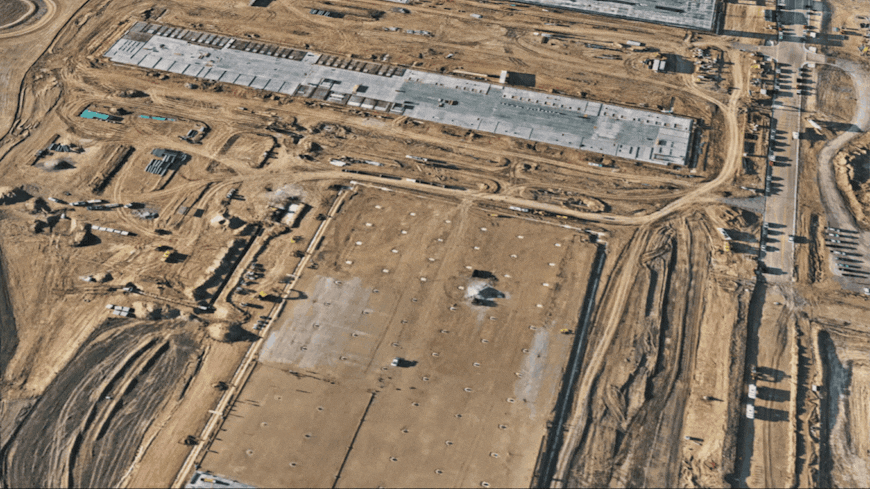
Propeller supports users working at large scale sites: quarries, mines, earthworks, waste management, etc. Courtesy Propeller.
For users like these, Propeller provides the tools to perform frequent accurate drone surveys, process that data, and visualize the site. When this isn’t frequent enough, DirtMate brings near-real-time data into the mix. Propeller’s platform gives users an intuitive 3D model that’s recent, realistic, and accurate, so they can spot safety hazards, track earthworks progress, and measure reality against design plans to make calculated operational decisions around material, labor, and equipment needs.
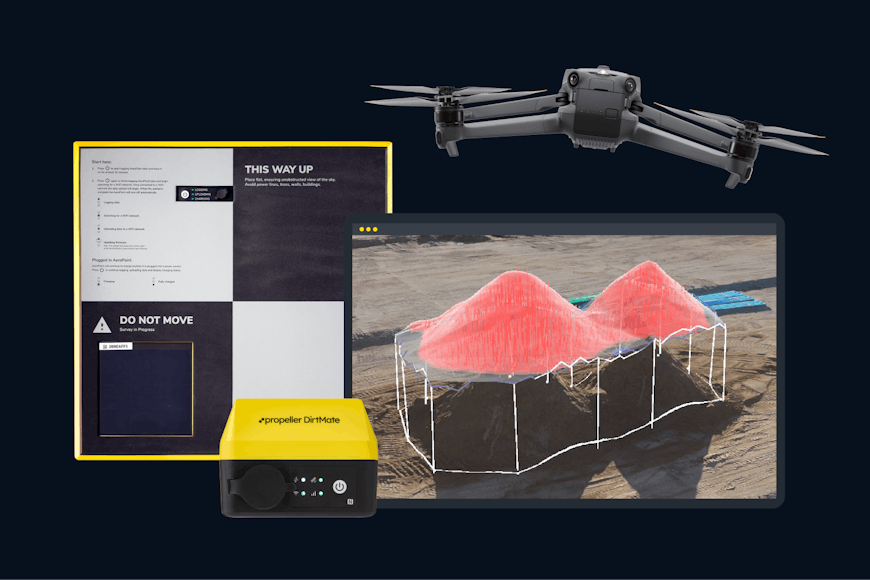
Propeller’s users perform drone scans of their sites and then visualize those scans in 3D with CesiumJS. Now, with support for IFC files as 3D Tiles, they’re able to compare designs against reality. Courtesy Propeller.
The heart of Propeller’s visualization is CesiumJS. Propeller was an early adopter of Cesium: for years they’ve been using Cesium’s open source software to visualize drone-captured surveys of earthworks, quarries, mines, and waste management sites. Propeller’s commitment to accuracy—reliably achieving geospatial accuracy within 3 cm—has made their platform trusted by professional surveyors. The sophisticated tooling they’ve brought into their platform, which they put into a simple form factor, makes advanced analysis accessible to anyone involved in the project, regardless of technical background.
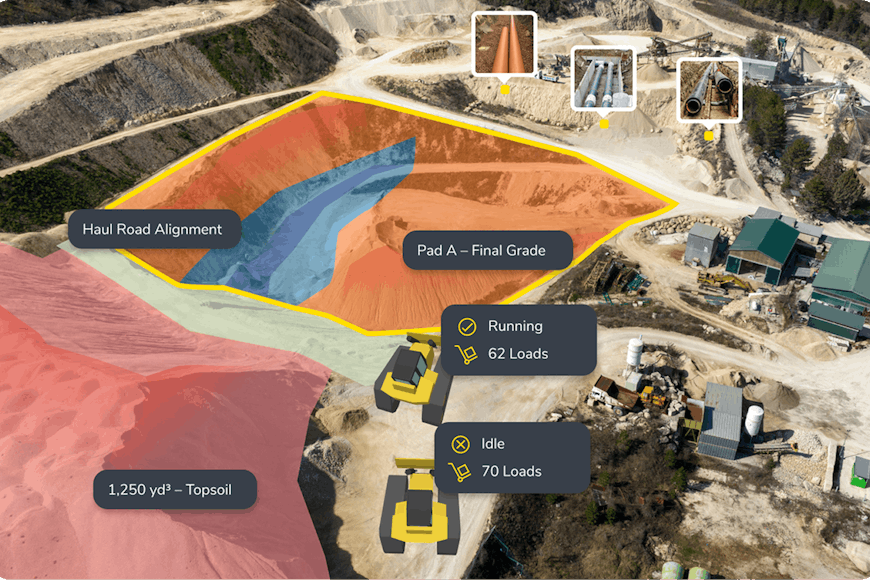
Propeller users can see their project in accurate 3D. For pipelines, electric utilities, railways, and other long linear assets, the geospatial coordinate system in CesiumJS renders designs aligned with real-world curvature. Courtesy Propeller.
Propeller recently got an upgrade when its team incorporated Cesium’s Design Tiler into the platform. The Design Tiler takes complex BIM data, like the Industry Foundation Classes (IFC) open standard, and tiles it into 3D Tiles for efficient streaming. These improvements allow users to look at much more granular data, on a much larger scale, faster than ever.
"Integrating the Cesium Design Tiler into our platform has revolutionized our support for BIM for all our customers.”
—Harry Morris, software engineer, Propeller
3D Tiles has made IFC files from one of the most cumbersome to one of the most performant file types on Propeller’s platform. This video shows first the original solution of an IFC model loaded in Propeller’s platform and then the same model tiled as 3D Tiles. Courtesy Propeller.
The tiling pipeline transformed IFC files—once cumbersome and limited to 300 MB—into one of the most performant file types on Propeller’s platform, which now supports IFC files up to 2 GB. This 6–7x increase in file size capacity came with dramatic performance gains.
“For our customers with the most demanding projects, framerates are up anywhere from 20% to 170%, and memory usage has been drastically reduced, with our most demanding models seeing a 60x reduction in memory usage and similar reductions in data transfer," said Harry Morris, Propeller software engineer.
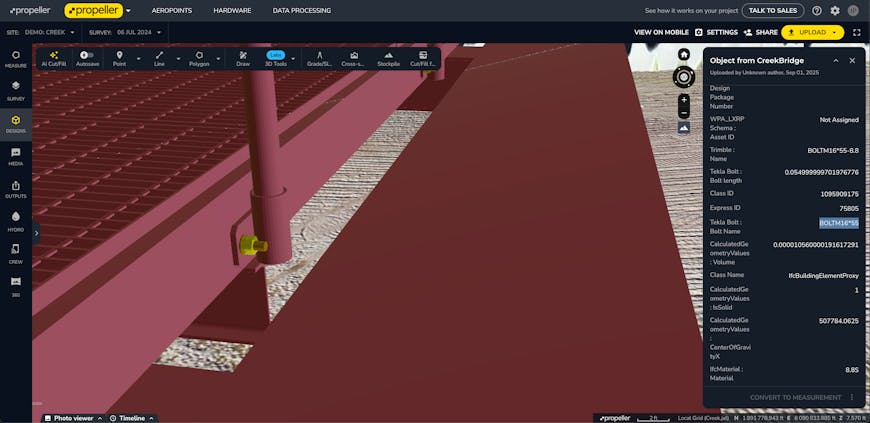
When streamed as 3D Tiles, IFC files retain all metadata: an inspector can click on an individual bolt in a bridge and see its size, manufacturer, the contractor responsible for installing it—whatever the users have uploaded. Courtesy Propeller.
Bringing Cesium’s Design Tiler into the platform took the Propeller team less than two months to roll out to full production deployment. When they released the new feature, the team also retroactively tiled all previously uploaded IFC files, delivering immediate value to their users without requiring re-uploads or workflow changes:
"Integrating the Cesium Design Tiler into our platform has revolutionized our support for BIM for all our customers. Cesium's expertise in the 3D Tiles open standard has delivered us a solution with greatly improved performance, accuracy, and feature richness—we've delivered highly requested features and given our construction customers confidence in an easy-to-use pipeline, revolutionizing their workflows," Morris said.
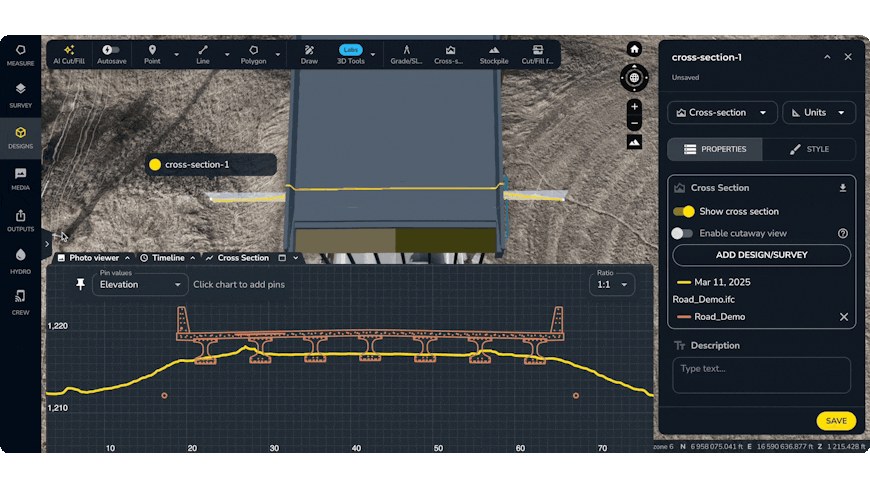
For Propeller’s users, streaming IFC files as 3D Tiles means a faster, higher quality experience. They can analyze large files, like viewing cross sections of this IFC model. Courtesy Propeller.
Explore how you can use 3D Tiles to make your datasets more accessible with Cesium’s 3D tiling pipelines.